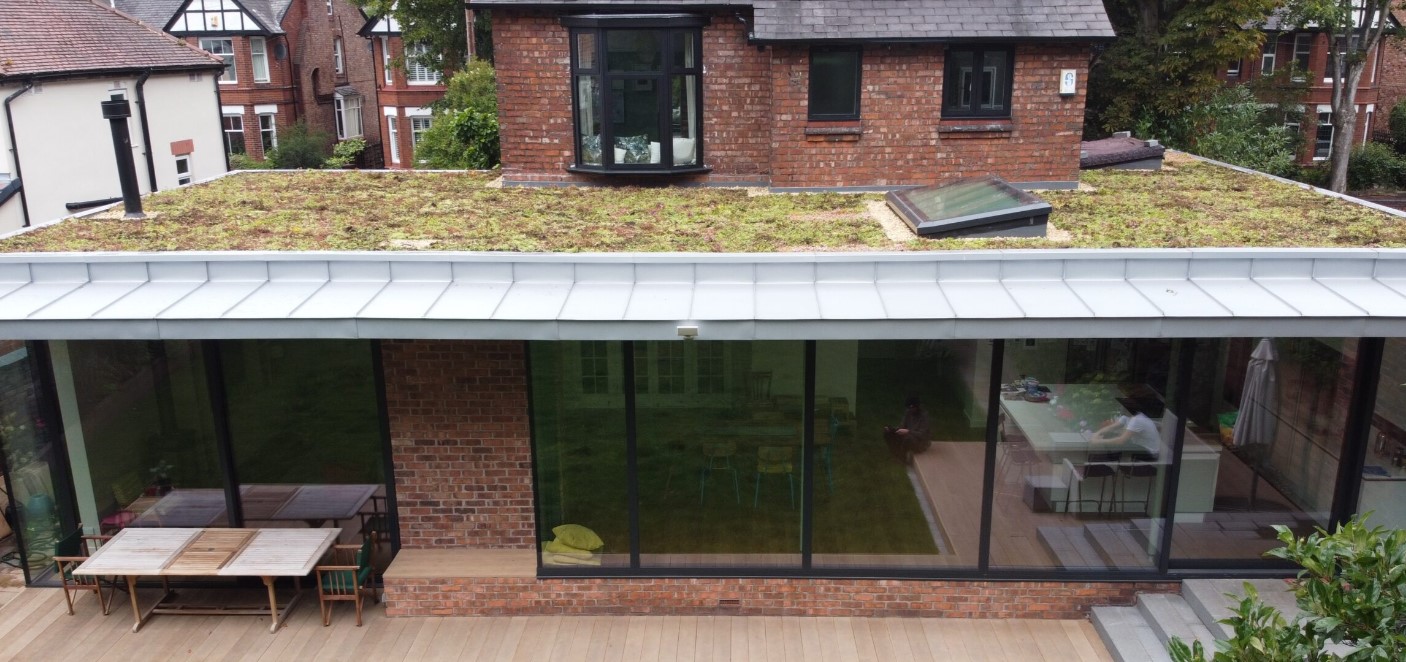Ratan Makes Buyers Ratty – Windows Have Wow Factor
A recent report by property expert Natalie Mitchell at HomeHow has identified old windows and doors as two of the leading aspects that make a property look...
Read Full Article
Green roofs are a popular choice for office buildings but they can be applied to house extensions and can still incorporate skylights or lanterns. What do you need to know?
To bring you up to speed on what a green roof is and what you need to know about delivering one, property/construction expert Natalie Mitchell at HomeHow.co.uk takes us through their benefits, where you can put them and what you can grow on one.
What is a green roof?
A green roof is essentially a roof that’s covered with plants, such as sedums and grasses, rather than traditional roofing materials such as tiles or felt. That’s why you might sometimes see them referred to as living roofs or sedum roofs.
Some of the latest green roof installations are going even further and combining the power of plants with solar panels to create a biosolar roof. Other systems combine greenery with a water storage and irrigation system, known as a blue-green roof. But green roofs don’t need to involve complex installations and can be as simple as laying a ready-made sedum mat over a moisture barrier.
Where can you put a green roof?
Green roofs aren’t suitable for every type of roof but they can be installed on most flat or very low-pitched roofs. You may have noticed many flat-roofed city centre buildings now have them. In fact, there are more than 700 green roofs in London alone.
But green roofs aren’t just for urban areas and large residential and commercial buildings. They’re also well-suited to flat-roof extensions and outbuildings including sheds, garages and even bin stores. So, most of us, whether we live in a town or the countryside, will have a suitable space to install one.
Are all green roofs the same?
There are different types of green roofs but most fall into one of two categories – intensive green roofs or extensive green roofs.
An intensive system is more like a fully formed roof garden. They’re a more complex or intensive system that combines a deep growing layer with an irrigation and drainage system, waterproofing and insulation. This type of green roof enables you to grow a wide range of plants and even small shrubs and trees. But as you might imagine, an intensive green roof is weighty, so needs extra structural support and should only be professionally installed. That’s why this type of roof is largely used on new buildings and extensions.
An extensive green roof is shallower and therefore lighter. So, it’s suitable for existing structures and new projects. It typically consists of a mat of plants like sedums on top of a thin layer of growing medium. Under this will be a drainage membrane and root barrier. Between this and the roof will be some waterproofing. You can buy extensive green roofs as a kit, making them easy to install.
What’s best to plant on a green roof?
What you can plant on a green roof depends on the type you have. Intensive green roofs have deeper growing mediums, so there’s more room for plant roots to develop. This means you can grow many varieties of flowers, shrubs and veggies. However, it’s usually best to grow hardier plants that are happy in sunny, exposed positions and that are drought tolerant.
Extensive green roofs only have a shallow layer of growing medium. So, you really need to use plants with shallow root systems, such as Sedums, Mosses, Ferns, Saxifraga (rockfoils), native wildflowers such as bird’s foot trefoil, Sempervivums (houseleeks) and Mediterranean herbs such as thyme and oregano.
How do you maintain a green roof?
Although you can grow a wider range of plants with an intensive green roof system, this comes with more maintenance. So, you do need to make sure there is some sort of roof access for your customer or trheir gardener.
As long as you’ve used suitable plants and included a drainage layer, an extensive green roof shouldn’t need much maintenance at all. In most cases, it will look after itself. The only thing is watering during long, dry spells.
Picture: With thanks to The Green Roof Company.
Article written by Cathryn Ellis
23rd July 2025